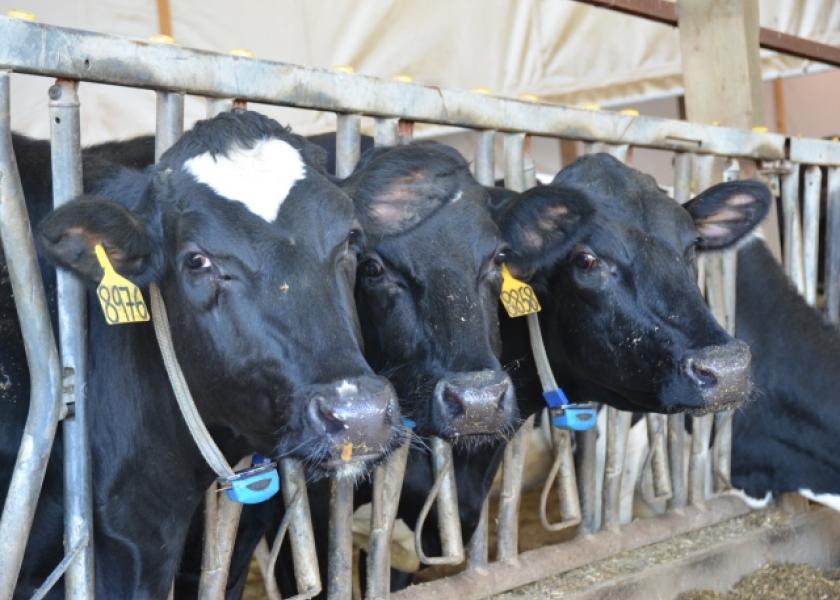Body Condition Score Still Important for Reproduction

This article published in Dairy Herd Management originally in 2020.
It might not be breaking news, but changes in body condition score during the transition period can dramatically affect reproductive outcomes.
Timed A.I. protocols have become so good that farmers, veterinarians and dairy reproductive specialists know they work. The temptation, though, is to tweak those protocols if reproductive performance falls short.
“We’ve been so successful with timed A.I. (TAI) protocols, and when we’re not successful, we think we’re using the wrong protocol,” says Paul Fricke, a dairy reproduction specialist with the University of Wisconsin. “We have good protocols now, but the loss of body condition before and after calving is a cow-related factor that explains a lot of the differences in fertility.”
If cows have too much condition at dry-off, they will inevitably lose weight at calving and in early lactation. These cows typically have much lower conception rates, take longer to conceive, have longer lactations, gain weight with more days in milk and the cycle repeats itself again and again.
Fricke and his colleague, Milo Wiltbank, showed that in a study of two Wisconsin herds with a total 1,887 cows, cows that lost body condition after calving had a pregnancy rate of just 25% 40 days after TAI. Those cows that maintained body condition after calving had a pregnancy rate of 38%, and those that gained weight had a pregnancy rate of 83%.
“All of these cows were on the same TAI protocol, so biologically what’s happening with these cows is body condition changes. It seems to have a profound effect on their fertility,” says Fricke.
Another trial, looking at embryo quality, explains why this occurs. When cows lose significant weight in the 3 weeks after calving, embryo quality deteriorates. In the trial, researchers looked at cows that were gaining weight at breeding, had no change, lost 4% or lost 8%. Conceptions rate was high in all four groups, averaging about 77%. But embryo quality was much different.
For those cows that were gaining weight, remained the same or lost just 4%, more than 60% of the embryos were Grade 1 or 2, and about 75% of all of their embryos were viable. But the cows that lost 8% of their bodyweight only had 38% Grade 1 or 2 embryos, and less than half of all their embryos were viable.
Yet another study, this one done in Brazil with 234 high producing Holsteins looked at the health of cows that lost, maintained or gained body weight after calving. Almost two thirds of cows that lost body weight had more than one health event (mastitis, metritis, ketosis or pneumonia) in their early lactations. Forty six percent of cows that maintained body condition had more than one health event, and 39% of cows that gained condition had more than one health event.
This is not cause and effect, but a correlation, points out Wiltbank. “But it appears some of the health events are causing problems and weight loss,” he says. And that, in turn, could lead to lower pregnancy rates.
So what does this all mean? “If you have cows that are too fat at dry off, they are going to lose weight around the time of calving and have bad fertility,” says Fricke.
What to do about it? Fricke and Wiltbank offer these six points.
• Body condition score cows multiple times throughout lactation. “You have to record these scores and put them in your management software so you can monitor patterns,” says Wiltbank.
• Shoot for a BCS of 3.0 or below at dry off. Note: You don’t want cows too thin at dry off, either.
• You may need to go to two lactation rations if you have cows with long calving intervals. A high-group ration simply offers too many calories for cows with a calving interval longer than 13 months.
• Get cows pregnant quickly. Cow that get pregnant early have fewer days in milk and less opportunity to gain weight later in lactation.
• Reconsider how many times you breed a cow. If you have a 50% conception rate, 90% of cows will be pregnant after 3 breedings.
• If a cow is not pregnant by 150 days in milk, consider her a candidate for the “do not breed” list.
For a much more detailed look at the effects of body condition score on fertility, go to: http://fourstatedairy.org/proceedings/17_wiltbank.pdf







